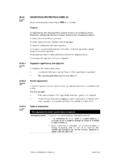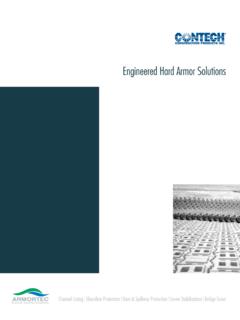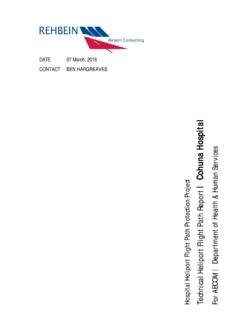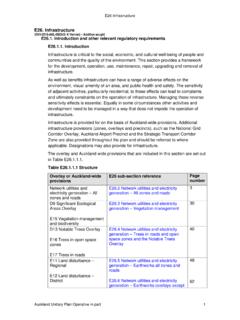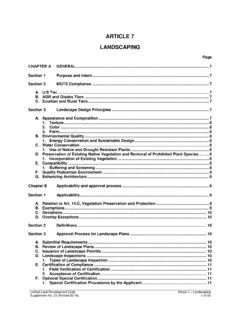Transcription of GULLY RESTORATION GUIDE
1 GULLY . RESTORATION . GUIDE . A GUIDE to assist in the ecological RESTORATION of Hamilton's GULLY systems. Municipal Offices, Garden Place Private Bag 3010. Hamilton, New Zealand Ph 07 838 6699, Fax 07 838 6599. Email: Internet: Acknowledgements The GUIDE was funded by the Hamilton City Council's Sustainable Environment Team and developed by a working group comprising GULLY RESTORATION representatives from the Hamilton City Council, The University of Waikato, Environment Waikato and local experts. Information presented in the GUIDE has been sourced from individuals and organisations with expert local knowledge of GULLY environments and RESTORATION methods. Contributors Written and compiled by Kim Wall and Bruce Clarkson. With special thanks to Peter Morris. With assistance from: The GULLY RESTORATION GUIDE Working Group Theresa Downs, The University of Waikato Wayne Bennett, Ecosourced Waikato Matthew Vare, Hamilton City Council.
2 Rob McGowan, The University of Waikato Tony Fraser Carolyn Lewis, Biosecurity Pest Plant Contractor with Environment Waikato Liz Hallsworth, Hamilton City Council Karen Denyer, Environment Waikato. Liz Hallsworth Liz Hallsworth Alasdair Craig, Hamilton City Council Bruce MacKay, Hamilton City Council Before After Cath Blake, Hamilton City Council Kemble Pudney, Hamilton City Council Jane Vermeren, Hamilton City Council Scott Gemmill, Continuing Education, University of Waikato Clare Jackson The GULLY RESTORATION Programme is a partnership between the Hamilton Presentation and layout: Digital Stream City Council and the community. The aim is to raise awareness and Graphics: Catherine Beard and Geoff Mardon Cover Photo: Adrienne Grant appreciation of Hamilton's GULLY systems and to encourage a sense of community ownership of these valuable areas. The GULLY RESTORATION GUIDE Published by has been developed to provide the information required to plan and implement a successful GULLY RESTORATION project.
3 First published March 2001. 2nd Edition August 2002. 3rd Edition June 2006. ISBN: 0-9582150-8-1. ISBN: 0-9582150-8-1. Printed on recycled, chlorine free paper. HOW TO USE THIS GUIDE . The GULLY RESTORATION GUIDE has been designed to help you begin your own GULLY RESTORATION project. It gives information on the different stages that a RESTORATION project will go through in an easy to follow, step by step layout. See the useful references available in the Appendices for more information to plan your project. Contents 1 INTRODUCTION 2. Hamilton's Hidden Treasures 2. The Aim of the GULLY RESTORATION GUIDE 2. Repairing Hamilton's Degraded GULLY Systems 3. Where are They? Examples of GULLY Restorations in Hamilton 6. 2 STEP BY STEP GUIDE TO GULLY RESTORATION 8. STEP ONE - Getting started 9. STEP TWO - Information gathering 10. STEP THREE - Defining your project goals 14.
4 STEP FOUR - Drawing a concept plan 16. STEP FIVE - What to plant, where? 18. STEP SIX - Where to get your plants 21. STEP SEVEN - Preparing your site for planting 22. STEP EIGHT - Planting 25. STEP NINE - Establishment and ongoing maintenance 27. 3 APPENDICES 30. Expertise and Information 31. Useful References 29. Soil Characterisation GUIDE 32. Native Plants for Gullies 34. Seed Collection and Propagation of Native Plants 52. Weed Identification and Control Methods 55. Notes 60. 1. 1 INTRODUCTION. Visitors to Hamilton, and many residents, may not be aware of the extensive GULLY systems that exist within the city. These gullies add another dimension to the cityscape, providing green space for recreation, visual relief from the urban environment, and habitats (places to live) for a wide range of wildlife. They are also a vital part of the city's walkway and drainage systems.
5 There are a number of significant GULLY systems in Hamilton and the remains of others that were largely filled in before their protection in 1987. However, the gullies today don't The Hamilton Ecological District is one of the look how they did most modified areas in New Zealand. Only as before European much as % of the original vegetation remains. settlement in the area. (Leathwick et al., 1995). Over time, as the city has expanded, the gullies' natural features have been degraded and a large proportion of their native flora and fauna (plants and animals) has been lost. Many members of the community have recognised how important gullies are in realising the vision of restoring indigenous biodiversity back to Hamilton. With approximately half of Hamilton's gullies owned privately, residents and community groups have a major role to play in helping bring back native vegetation and bird life to the city.
6 This guides' objective is to help groups or individual members of the community to restore Hamilton's valuable GULLY assets and will tell you how to: 1. Make an accurate and useful assessment of the project site 2. Develop a project management plan taking into account site specific information 3. Access resources and additional expertise and knowledge 4. Make decisions on how to organise and implement a successful RESTORATION project 2. Hamilton's gullies are a key landscape and natural feature within the city. They are estimated to occupy around 750 hectares or 8% of the city area (Downs et. al. 2000). The gulllies are the result of the undermining of a geological formation of sands, silt, peat and gravel known as the Hinuera formation (a deposit formed from the accumulation of volcanic material brought down by the Waikato River from the Taupo area).
7 Around 15,000. years ago, the Waikato River started to cut down through this material to create its present channel and as it deepened, springs were exposed along the riverbanks. As water drained from the surrounding land, these springs undermined the banks causing slips and creating a network of streams draining into the Waikato River. This process was repeated again and again giving rise to erosion and the formation of the steep-sided and intricate network of gullies that adjoin the river today. MANGAKOTUKUTUKU GULLY system 3. Hamilton's GULLY systems have lots of important functions and values. They contain significant areas of native vegetation and provide important green pathways for wildlife. They are used for a variety of outdoor activities and are important for their scenic values. The gullies also have cultural significance for Waikato iwi and contain heritage sites of historical and cultural importance.
8 The GULLY streams are an essential part of Hamilton's drainage network, channelling water from urban areas into the Waikato River. The quality of water within these streams is particularly important to the health of residents, wildlife and the food chain. In 1989 a GULLY Protection Zone was established as part of the new Hamilton City Council District Plan, providing rules to control development in and around gullies. These rules' cover building and construction in and near gullies, earthworks, removal of vegetation and channelling of storm plan was reviewed again in 1997 to reflect Council's responsibilities under the Resource Management Act, 1991. This is now covered by an Environmental Protection Overlay. Ask Hamilton City Council for a copy of the leaflet Protecting Our Gullies . Looking after the ecological functions of the GULLY systems is now an important part of city planning.
9 Hamilton's District Plan envisages a Green Network which links the city's natural features into a continuous natural corridor and, over time, restores them. The idea of this green corridor is to increase our urban biodiversity (the variety of life forms that exist in a particular place) and to improve the natural environment that supports the city. It is not easy to successfully look after and improve the GULLY system during rapid growth in the city. Providing rules through the District Plan to control aspects of development around gullies is one method, but by itself won't be enough. The Council and the community must use a range of other methods to help achieve these goals, such as: 1. Restoring and replanting gullies in conjunction with the Community Planting Programme 2. Providing information and education to increase public awareness and understanding of environmental issues 4.
10 3. Controlling weeds and pests on Council land 4. Developing GULLY management plans 5. Funding the purchase of gullies as reserves There are a number of initiatives undertaken in Hamilton to protect and enhance gullies. Hamilton City Council's GULLY Management Plan and Council's GULLY RESTORATION Programme are a couple of ways Council is working towards improving the city's natural environment. Other community initiatives such as the GULLY register project, aims to identify and monitor restorations taking place in the city's gullies and is an important part of measuring progress towards restoring indigenous biodiversity back to Hamilton. As at October 2003 some 187 hectares were under RESTORATION including 142 ha on public land and 45 ha on private land. With effort from the whole community, Hamilton City can continue to develop and grow in harmony with its unique GULLY systems and other important natural features.
